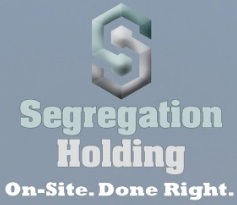The Cost Segregation Audit Techniques Guide was developed specifically to assist IRS examiners in their review and exam of cost segregation studies. It was NOT, as many believe, developed to help cost segregation firms, or the layperson, perform a cost segregation study.
It’s primary goals are to help these examiners understand:
- why cost segregation studies are performed for federal income tax purposes;
- how cost segregation studies are prepared; and
- what to look for in the review and examination of a cost segregation study.
Property, whether it is purchased or built, always consists of different asset types, many of which have different recovery periods. For instance, carpeting, trim, specialized plumbing or electrical, and secondary lighting falls under IRC Sec. 1245 as “tangible personal property.” Thus, it should be depreciated over a 5-year period. The hard real estate asset (building structure and it’s supporting elements) falls under IRC Sec. 1250 as “real property.” This asset class is depreciated over a 39-year period when it is non-residential and a 27½-year period when it is residential. When the actual cost of each individual component is available via invoices or contemporaneous evidence this becomes a simple accounting procedure. Of course, rarely is it the case when all documentation is available…this is when cost estimating techniques are required to “segregate” or “allocate” cost to the individual components.
The Cost Segregation Audit Techniques Guide really came about after the landmark ruling of Hospital Corporation of America, 109 T.C. 21 (1997), when the Tax Court ruled against the IRS and they acquiesced to the use of ITC rules for allocating Sec. 1245 property from within Sec. 1250 property. Unfortunately, the Cost Segregation Audit Techniques Guide did not give a true “bright-line” test of what is and what is not “tangible personal property” and is therefore subject to “interpretation” by either party. It is for this reason that IRS recommends using those who are “trained in construction and/or building techniques” to conduct cost segregation studies.
Cost segregation is money in the bank for the commercial property owner when it is used as part of a well-planned tax strategy. Always consult your CPA or tax professional when considering any tax-planning tool or strategy.
Cost segregation delivers results every time it’s applied!
Click Free Assessment to access a simple one-page client questionnaire that will allow us to provide you with a complimentary benchmark estimate of the potential taxes you can save in addition to our fixed fee for service.
Questions or comments…
[email protected]
Segregation Holding
LinkedIn
Twitter, or
972-897-8019


